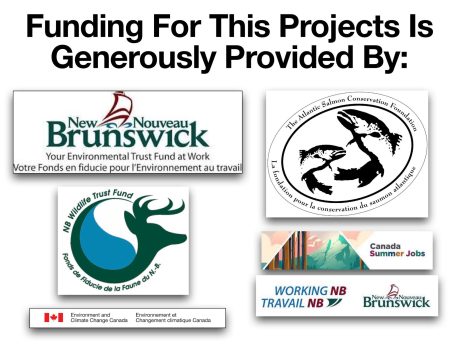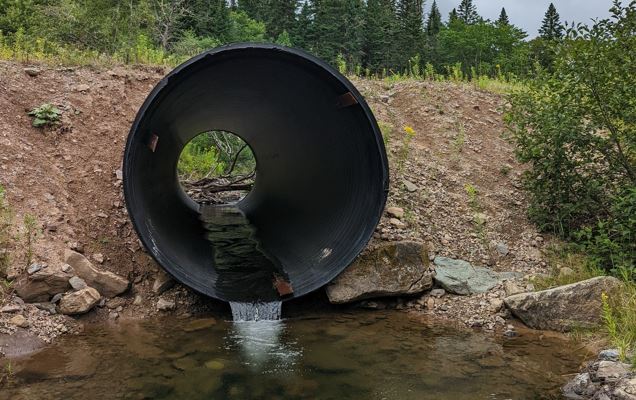Fish Passage Assessment 2022
Fish require passage between and within watercourses to complete necessary stages of their life cycle including spawning, finding food and shelter. Additionally, fish assist with recycling nutrients in watercourses and help maintain healthy aquatic ecosystems. By assessing road-watercourse crossings, the Belleisle Watershed Coalition helped to identify barriers that block the natural movement of fish and degrade healthy aquatic ecosystems.
Over the course of the past summer, our hard working field staff assessed a total of 46 watercourse crossings within the upper Belleisle watershed. Results are now in and it was surprising to learn that only 10 of the 46 structures (21.74%) assessed were found to be completely passable by fish. Of the remaining 36 structures, 20 structures (43.48%) require remediation of a full barrier and 16 (34.78%) require remediation of a partial barrier. This means 250 kilometres (km) of stream habitat have a barrier to the free movement of fish. This is equivalent to putting 36 roadblocks on the highway between St. Andrews and Moncton! Yikes! Looks like we have our work cut out for us and will be working hard through the winter to start planning barrier remediation next year, stay tuned to learn more about this fascinating project.
This project was made possible thanks to the generous support from the Atlantic Salmon Conservation Foundation, the New Brunswick Environmental Trust Fund, the New Brunswick Wildlife Trust Fund, the New Brunswick Student Employment Experience Development and the Government of Canada’s Canada Summer Jobs program and Environment Canada’s Science Horizons Program.

